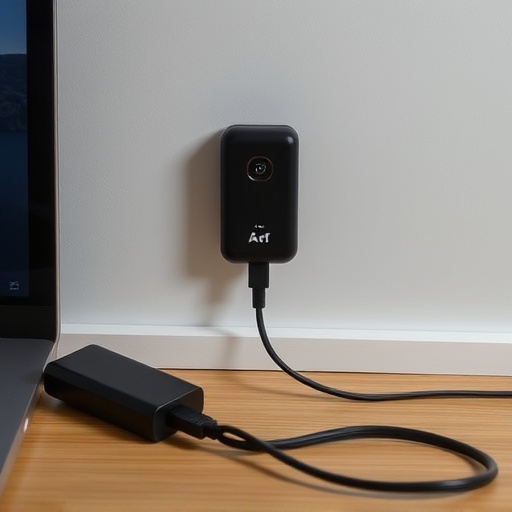The USB charger hidden camera is a covert surveillance tool that blends seamlessly into everyday life. Posing as a standard charging cable, it records high-definition video with motion detection and allows remote access via smartphone app. Its discreet design and advanced features make it popular for personal and professional monitoring, ensuring security without compromising aesthetics. However, its use in public spaces raises critical legal and ethical concerns, highlighting the importance of transparency, privacy respect, and adherence to relevant regulations.
Uncover the world of surveillance with the innovative USB charger hidden camera—a discreet, everyday gadget that captures moments without raising suspicion. This article delves into the functionality and versatility of these spy gadgets, exploring their working mechanisms and diverse applications. From home security to on-the-go monitoring, learn how USB-based spying devices offer a covert solution for modern times. We’ll navigate legal boundaries and ethical debates surrounding public space surveillance, providing an in-depth look at this fascinating technology.
Understanding USB Charger Hidden Camera: A Discreet Surveillance Tool
The USB charger hidden camera is a sophisticated surveillance tool designed to blend seamlessly into everyday life. This compact device appears as an ordinary USB charging cable, but it harbors advanced video recording capabilities. Its dual functionality allows users to charge devices while discreetly capturing footage, making it ideal for covert monitoring in various settings.
This innovative gadget offers high-definition video quality, motion detection, and remote access via a smartphone app. The hidden camera’s ability to record secretly makes it a popular choice for personal and professional surveillance needs. Whether for home security or business intelligence, the USB charger hidden camera provides a discreet and effective monitoring solution without compromising aesthetics.
How Does a USB Charger Hidden Camera Work?
A USB charger hidden camera is a sophisticated piece of technology that seamlessly integrates functionality and secrecy. At its core, it operates as a standard USB device, connecting to any compatible power source via a port commonly found on computers, walls, or portable power banks. Once plugged in, the camera remains inactive, disguised within the form factor of an ordinary charger. Power is channeled to it just like any other USB peripheral, but its true purpose lies hidden.
Inside the USB charger housing, a miniature camera captures video and/or still images without drawing attention. This process is facilitated by advanced micro-circuitry that manages power distribution while ensuring the camera’s operational integrity. Whether placed in an office, home, or public space, the usb charger hidden camera remains virtually undetectable until activated remotely through a connected device.
Benefits and Applications of Using Spy Gadgets in Everyday Life
Spy gadgets, such as USB charger hidden cameras, offer a range of benefits and applications that can enhance everyday life for individuals seeking added security, peace of mind, or even creative solutions. These versatile devices seamlessly blend functionality with discreetness, allowing users to capture evidence, monitor sensitive areas, or simply stay connected without raising suspicion.
In residential settings, USB charger hidden cameras can serve as valuable tools for home security and surveillance, providing a means to deter potential intruders or catch suspicious activities. In professional environments, they find use in confidential meetings, interviews, or remote work spaces, ensuring that sensitive discussions remain private and unrecorded. Moreover, these gadgets can be employed creatively for pet monitoring, travel safety, or even as educational tools to capture unique perspectives and experiences without compromising privacy when used ethically and responsibly.
Exploring Different Types of USB-Based Spying Devices
USB-based spying devices have evolved beyond simple flash drives, offering a wide array of options for covert surveillance. One of the most discreet and versatile tools is the USB charger hidden camera—a device that seamlessly blends into everyday objects. These cameras are designed to look like common charging ports or power banks, making them nearly invisible in any environment. They can capture high-definition video and still images, providing remote access via a connected app. This technology allows users to monitor spaces secretly, ensuring peace of mind and enhanced security.
From compact USB keychains with built-in cameras to more elaborate USB chargers with multiple hidden lenses, these devices cater to various needs. Some advanced models even offer motion detection, night vision capabilities, and long battery life, making them reliable for extended surveillance. Whether it’s a parent checking on their child’s activities or a business owner monitoring an unstaffed area, USB charger hidden cameras provide a covert and efficient solution.
Legal Considerations and Ethical Use of Hidden Cameras in Public Spaces
The use of hidden cameras, especially those integrated into everyday items like USB chargers, raises significant legal and ethical questions in public spaces. While some regions have specific laws governing surveillance devices, many areas lack clear regulations, leaving room for ambiguity. It’s crucial to understand that capturing footage in public without consent can infringe on privacy rights guaranteed by law. This is particularly sensitive when the device appears innocuous, like a standard USB charger, making it easier to capture intimate moments or gather personal information undetected.
Ethically, the use of usb charger hidden cameras should be approached with utmost caution. The principle of transparency and respect for privacy must be upheld. In public areas, individuals have a reasonable expectation of privacy, and covert surveillance can erode trust in communities. It’s essential to consider the context and purpose before employing such technology, ensuring compliance with legal frameworks and adhering to ethical standards to maintain a harmonious balance between security needs and individual freedoms.
